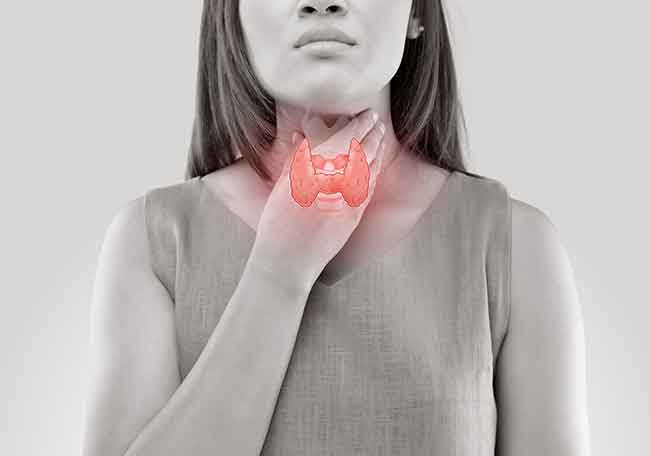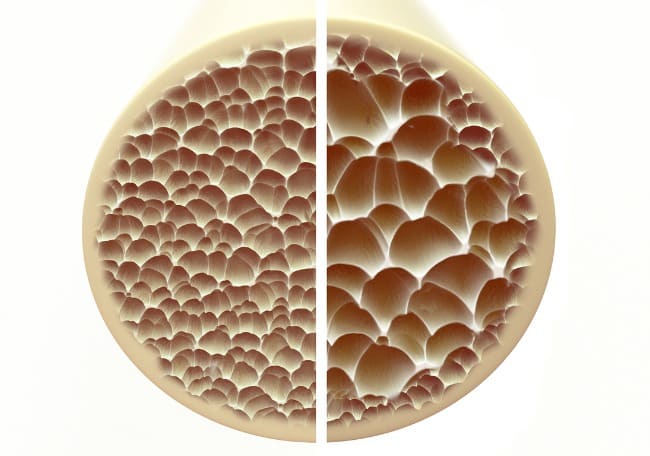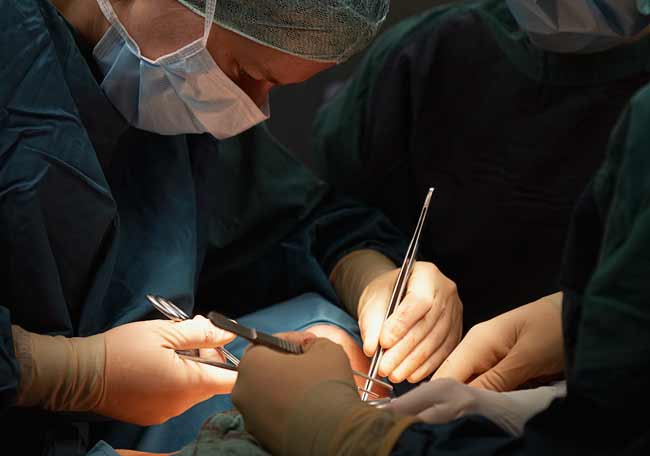Hiperparatiroidismo primario

1. Cope, O. The study of hyperparathyroidism at the Massachusetts General Hospital. N. Engl. J. Med. 274, 1174–1182 (1966).
2. Yeh, M. W. et al. Incidence and prevalence of primary hyperparathyroidism in a racially mixed population. J. Clin. Endocrinol. Metab. 98, 1122–1129 (2013).
3. Wermers, R. A. et al. Incidence of primary hyperparathyroidism in Rochester, Minnesota, 1993–2001: an update on the changing epidemiology of the disease. J. Bone Miner. Res. 21, 171–177 (2006).
4. Press, D. M. et al. The prevalence of undiagnosed and unrecognized primary hyperparathyroidism: a population-based analysis from the electronic medical record. Surgery 154, 1232–1237 (2013).
5. Heath, H. 3rd, Hodgson, S. F. & Kennedy, M. A. Primary hyperparathyroidism. Incidence, 7morbidity, and potential economic impact in a community. N. Engl. J. Med. 302, 189–193 (1980).
6. Wermers, R. A. et al. The rise and fall of primary hyperparathyroidism: a population-based study in Rochester, Minnesota, 1965–1992. Ann. Intern. Med. 126, 433–440 (1997).
7. Griebeler, M. L. et al. Secular trends in the incidence of primary hyperparathyroidism over five decades. Bone 73, 1–7 (2015).
8. Silverberg, S. J., Shane, E., Jacobs, T. P., Siris, E. & Bilezikian, J. P. A 10‑year prospective study of primary hyperparathyroidism with or without parathyroid surgery. N. Engl. J. Med. 341, 1249–1255 (1999).
9. Rao, S. D. et al. Hyperparathyroidism following head and neck irradiation. Arch. Intern. Med. 140, 205–207 (1980).
10. Bendz, H., Sjodin, I., Toss, G. & Berglund, K. Hyperparathyroidism and long-term lithium therapy — a cross-sectional study and the effect of lithium withdrawal. J. Intern. Med. 240, 357–365 (1996).
11. Newey, P. J. et al. Whole-exome sequencing studies of nonhereditary (sporadic) parathyroid adenomas. J. Clin. Endocrinol. Metab. 97, E1995–E2005 (2012).
12. Costa-Guda, J. & Arnold, A. Genetic and epigenetic changes in sporadic endocrine tumors: parathyroid tumors. Mol. Cell. Endocrinol. 386, 46–54 (2014).
13. Pardi, E. et al. Aryl hydrocarbon receptor interacting protein (AIP) mutations occur rarely in sporadic parathyroid adenomas. J. Clin. Endocrinol. Metab. 98, 2800–2810 (2013).
14. Arnold, A. M. & Levine, M. A. in The Parathyroids: Basic and Clinical Concepts (ed. Bilezikian, J. P.) 279–297 (Academic Press, 2015).
15. Marx, S. J. et al. Hyperparathyroidism in hereditary syndromes: special expressions and special managements. J. Bone Miner. Res. 17 (Suppl. 2), N37–N43 (2002).
16. Thakker, R. V. Genetics of parathyroid tumours. J. Intern. Med. 280, 574–583 (2016).
17. Guan, B. et al. GCM2‑activating mutations in familial isolated hyperparathyroidism. Am. J. Hum. Genet. 99, 1034–1044 (2016).
18. Yu, W. et al. Whole-exome sequencing studies of parathyroid carcinomas reveal novel PRUNE2 mutations, distinctive mutational spectra related to APOBEC-catalyzed DNA mutagenesis and mutational enrichment in kinases associated with cell migration and invasion. J. Clin. Endocrinol. Metab. 100, E360–E364 (2015).
19. Corbetta, S. et al. Differential expression of microRNAs in human parathyroid carcinomas compared with normal parathyroid tissue. Endocr. Relat. Cancer 17, 135–146 (2010).
20. Brown, E. M. Role of the calcium-sensing receptor in extracellular calcium homeostasis. Best Pract. Res. Clin. Endocrinol. Metab. 27, 333–343 (2013).
21. Mahoney, E. J., Monchik, J. M., Donatini, G. & De Lellis, R. Life-threatening hypercalcemia from a hepatocellular carcinoma secreting intact parathyroid hormone: localization by sestamibi single-photon emission computed tomographic imaging. Endocr. Pract. 12, 302–306 (2006).
22. Nussbaum, S. R., Gaz, R. D. & Arnold, A. Hypercalcemia and ectopic secretion of parathyroid hormone by an ovarian carcinoma with rearrangement of the gene for parathyroid hormone. N. Engl. J. Med. 323, 1324–1328 (1990).
23. D’Amour, P. et al. Amino-terminal form of parathyroid hormone (PTH) with immunologic similarities to hPTH(1–84) is overproduced in primary and secondary hyperparathyroidism. Clin. Chem. 49, 2037–2044 (2003).
24. Eastell, R. et al. Diagnosis of asymptomatic primary hyperparathyroidism: proceedings of the Fourth International Workshop. J. Clin. Endocrinol. Metab. 99, 3570–3579 (2014).
25. Wilhelm, S. M. et al. The American Association of Endocrine Surgeons Guidelines for definitive management of primary hyperparathyroidism. JAMA Surg. 151, 959–968 (2016).
26. Eastell, R. et al. Diagnosis of asymptomatic primary hyperparathyroidism: proceedings of the third international workshop. J. Clin. Endocrinol. Metab. 94, 340–350 (2009).
27. Nesbit, M. A. et al. Mutations affecting G‑protein subunit α11 in hypercalcemia and hypocalcemia. N. Engl. J. Med. 368, 2476–2486 (2013).
28. Nesbit, M. A. et al. Mutations in AP2S1 cause familial hypocalciuric hypercalcemia type 3. Nat. Genet. 45, 93–97 (2013).
29. Lowe, H., McMahon, D. J., Rubin, M. R., Bilezikian, J. P. & Silverberg, S. J. Normocalcemic primary hyperparathyroidism: further characterization of a new clinical phenotype. J. Clin. Endocrinol. Metab. 92, 3001–3005 (2007).
30. Albright, F., Aub, J. & Bauer, W. Hyperparathyroidism: common and polymorphic condition as illustrated by seventeen proven cases in one clinic. JAMA 102, 1276 (1934).
31. Silverberg, S. J. et al. Current issues in the presentation of asymptomatic primary hyperparathyroidism: proceedings of the Fourth International Workshop. J. Clin. Endocrinol. Metab. 99, 3580–3594 (2014).
32. Usta, A., Alhan, E., Cinel, A., Turkyilmaz, S. & Erem, C. A 20‑year study on 190 patients with primary hyperparathyroidism in a developing country: Turkey experience. Int. Surg. 100, 648–655 (2015).
33. Mallette, L. E., Bilezikian, J. P., Heath, D. A. & Aurbach, G. D. Primary hyperparathyroidism: clinical and biochemical features. Med. (Baltimore) 53, 127–146 (1974).
34. Liu, J. M. et al. Primary hyperparathyroidism: a tale of two cities revisited — New York and Shanghai. Bone Res. 1, 162–169 (2013).
35. Malabu, U. H. & Founda, M. A. Primary hyperparathyroidism in Saudi Arabia: a review of 46 cases. Med. J. Malaysia 62, 394–397 (2007).
36. Paruk, I. M., Esterhuizen, T. M., Maharaj, S., Pirie, F. J. & Motala, A. A. Characteristics, management and outcome of primary hyperparathyroidism in South Africa: a single-centre experience. Postgrad. Med. J. 89, 626–631 (2013).
37. Shah, V. N., Bhadada, S., Bhansali, A., Behera, A. & Mittal, B. R. Changes in clinical and biochemical presentations of primary hyperparathyroidism in India over a period of 20 years. Indian J. Med. Res. 139, 694–699 (2014).
38. Zhao, L. et al. The changing clinical patterns of primary hyperparathyroidism in Chinese patients: data from 2000 to 2010 in a single clinical center. J. Clin. Endocrinol. Metab. 98, 721–728 (2013).
39. Bandeira, F. & Cassibba, S. Hyperparathyroidism and bone health. Curr. Rheumatol. Rep. 17, 48 (2015).
40. Oliveira, U. E. et al. Analysis of the diagnostic presentation profile, parathyroidectomy indication and bone mineral density follow‑up of Brazilian patients with primary hyperparathyroidism. Braz. J. Med. Biol. Res. 40, 519–526 (2007).
41. Spivacow, F. R., Martinez, C. & Polonsky, A. [Primary hyperparathyroidism: postoperative long-term evolution]. Medicina (B. Aires) 70, 408–414 (in Spanish) (2010).
42. Walker, M. D. et al. Low vitamin D levels have become less common in primary hyperparathyroidism. Osteoporos. Int. 26, 2837–2843 (2015).
43. Moosgaard, B. et al. Vitamin D status, seasonal variations, parathyroid adenoma weight and bone mineral density in primary hyperparathyroidism. Clin. Endocrinol. (Oxf.) 63, 506–513 (2005).
44. Boudou, P., Ibrahim, F., Cormier, C., Sarfati, E. & Souberbielle, J. C. A very high incidence of low 25 hydroxy-vitamin D serum concentration in a French population of patients with primary hyperparathyroidism. J. Endocrinol. Invest. 29, 511–515 (2006).
45. Clements, M. R. et al. The role of 1,25‑dihydroxyvitamin D in the mechanism of acquired vitamin D deficiency. Clin. Endocrinol. (Oxf.) 37, 17–27 (1992).
46. Clements, M. R. et al. Metabolic inactivation of vitamin D is enhanced in primary hyperparathyroidism. Clin. Sci. (Lond.) 73, 659–664 (1987).
47. Rao, D. S. et al. Effect of vitamin D nutrition on parathyroid adenoma weight: pathogenetic and clinical implications. J. Clin. Endocrinol. Metab. 85, 1054–1058 (2000).
48. Silverberg, S. J., Shane, E., Dempster, D. W. & Bilezikian, J. P. The effects of vitamin D insufficiency in patients with primary hyperparathyroidism. Am. J. Med. 107, 561–567 (1999).
49. Tassone, F. et al. Vitamin D status in primary hyperparathyroidism: a Southern European perspective. Clin. Endocrinol. (Oxf.) 79, 784–790 (2013).
50. Viccica, G., Cetani, F., Vignali, E., Miccoli, M. & Marcocci, C. Impact of vitamin D deficiency on the clinical and biochemical phenotype in women with sporadic primary hyperparathyroidism. Endocrine 55, 256–265 (2017).
51. Walker, M. D. et al. Vitamin D in primary hyperparathyroidism: effects on clinical, biochemical, and densitometric presentation. J. Clin. Endocrinol. Metab. 100, 3443–3451 (2015).
52. Yamashita, H. et al. Vitamin D status in Japanese patients with hyperparathyroidism: seasonal changes and effect on clinical presentation. World J. Surg. 26, 937–941 (2002).
53. Ozbey, N. et al. Correlations between vitamin D status and biochemical/clinical and pathological parameters in primary hyperparathyroidism. World J. Surg. 30, 321–326 (2006).
54. Jayasena, C. N. et al. Associations of serum 25‑hydroxyvitamin D with circulating PTH, phosphate and calcium in patients with primary hyperparathyroidism. Clin. Endocrinol. (Oxf.) 78, 838–843 (2013).
55. Inoue, Y. et al. Vitamin D status affects osteopenia in postmenopausal patients with primary hyperparathyroidism. Endocr. J. 55, 57–65 (2008).
56. Moosgaard, B. et al. Plasma 25‑hydroxyvitamin D and not 1,25‑dihydroxyvitamin D is associated with parathyroid adenoma secretion in primary hyperparathyroidism: a cross-sectional study. Eur. J. Endocrinol. 155, 237–244 (2006).
57. Moosgaard, B. et al. Vitamin D metabolites and skeletal consequences in primary hyperparathyroidism. Clin. Endocrinol. (Oxf.) 68, 707–715 (2008).
58. Shah, V. N., Shah, C. S., Bhadada, S. K. & Rao, D. S. Effect of 25 (OH) D replacements in patients with primary hyperparathyroidism (PHPT) and coexistent vitamin D deficiency on serum 25(OH) D, calcium and PTH levels: a meta-analysis and review of literature. Clin. Endocrinol. (Oxf.) 80, 797–803 (2014).
59. Rolighed, L. et al. Vitamin D treatment in primary hyperparathyroidism: a randomized placebo controlled trial. J. Clin. Endocrinol. Metab. 99, 1072–1080 (2014).
60. Silverberg, S. J. et al. Skeletal disease in primary hyper-parathyroidism. J. Bone Miner. Res. 4, 283–291 (1989).
61. Parisien, M. et al. The histomorphometry of bone in primary hyperparathyroidism: preservation of cancellous bone structure. J. Clin. Endocrinol. Metab. 70, 930–938 (1990).
62. Cipriani, C. et al. Prevalence of kidney stones and vertebral fractures in primary hyperparathyroidism using imaging technology. J. Clin. Endocrinol. Metab. 100, 13091315 (2015).
63. Khosla, S. et al. Primary hyperparathyroidism and the risk of fracture: a population-based study. J. Bone Miner. Res. 14, 1700–1707 (1999).
64. Vignali, E. et al. Morphometric vertebral fractures in postmenopausal women with primary hyperparathyroidism. J. Clin. Endocrinol. Metab. 94, 2306–2312 (2009).
65. Mosekilde, L. Primary hyperparathyroidism and the skeleton. Clin. Endocrinol. (Oxf.) 69, 1–19 (2008).
66. De Geronimo, S., Romagnoli, E., Diacinti, D., D’Erasmo, E. & Minisola, S. The risk of fractures in postmenopausal women with primary hyperparathyroidism. Eur. J. Endocrinol. 155, 415–420 (2006).
67. Stein, E. M. et al. Primary hyperparathyroidism is associated with abnormal cortical and trabecular microstructure and reduced bone stiffness in postmenopausal women. J. Bone Miner. Res. 28, 1029–1040 (2013).
68. Walker, M. D. et al. Effect of concomitant vitamin D deficiency or insufficiency on lumbar spine volumetric bone mineral density and trabecular bone score in primary hyperparathyroidism. Osteoporos. Int. 27, 3063–3071 (2016).
Comentarios
Para ver los comentarios de sus colegas o para expresar su opinión debe ingresar con su cuenta de IntraMed.












